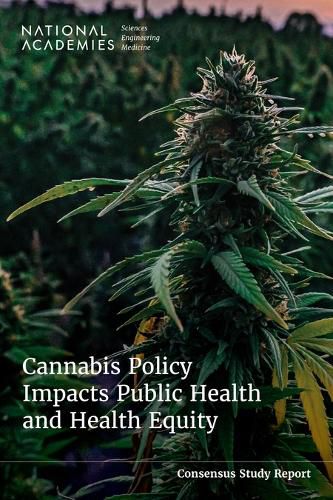Readings Newsletter
Become a Readings Member to make your shopping experience even easier.
Sign in or sign up for free!
You’re not far away from qualifying for FREE standard shipping within Australia
You’ve qualified for FREE standard shipping within Australia
The cart is loading…






Over the past several decades, more than half of all U.S. states have legalized cannabis for adult and/or medical use, but it remains illegal at the federal level. The public health consequences of cannabis policy changes have not been comprehensively evaluated.
Therefore, the Centers for Disease Control and Prevention and the National Institutes of Health tasked the National Academies with reviewing cannabis and cannabinoid availability in the U.S., assessing regulatory frameworks for the industry with an emphasis on equity, and describing strengths and weaknesses of surveillance systems for cannabis.
The resulting report finds that there has been limited federal guidance to states regarding protecting public health, which has led to inconsistent protection across the states. The report recommends a strategy to minimize public health harms through stronger federal leadership, a robust research agenda, and more.
Table of Contents
Front Matter Summary 1 Introduction 2 Overview of Cannabis Policy 3 Cannabis Consumption and Markets in the United States 4 Applying the Core Public Health Functions to Cannabis Policy 5 How Cannabis Policy Influences Social and Health Equity 6 Available and Needed Research on Cannabis Policy Appendix A: Committee Member and Staff Biosketches Appendix B: Public Meeting Agendas Appendix C: Data Sources Available for Cannabis Surveillance Appendix D: Evidence Review: Methods and Approach
$9.00 standard shipping within Australia
FREE standard shipping within Australia for orders over $100.00
Express & International shipping calculated at checkout
Over the past several decades, more than half of all U.S. states have legalized cannabis for adult and/or medical use, but it remains illegal at the federal level. The public health consequences of cannabis policy changes have not been comprehensively evaluated.
Therefore, the Centers for Disease Control and Prevention and the National Institutes of Health tasked the National Academies with reviewing cannabis and cannabinoid availability in the U.S., assessing regulatory frameworks for the industry with an emphasis on equity, and describing strengths and weaknesses of surveillance systems for cannabis.
The resulting report finds that there has been limited federal guidance to states regarding protecting public health, which has led to inconsistent protection across the states. The report recommends a strategy to minimize public health harms through stronger federal leadership, a robust research agenda, and more.
Table of Contents
Front Matter Summary 1 Introduction 2 Overview of Cannabis Policy 3 Cannabis Consumption and Markets in the United States 4 Applying the Core Public Health Functions to Cannabis Policy 5 How Cannabis Policy Influences Social and Health Equity 6 Available and Needed Research on Cannabis Policy Appendix A: Committee Member and Staff Biosketches Appendix B: Public Meeting Agendas Appendix C: Data Sources Available for Cannabis Surveillance Appendix D: Evidence Review: Methods and Approach